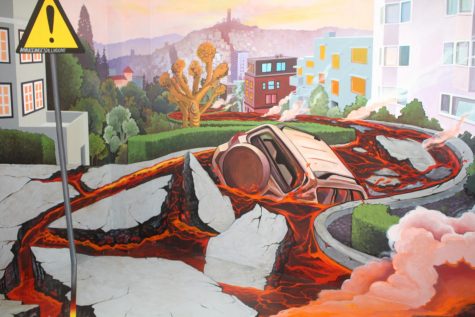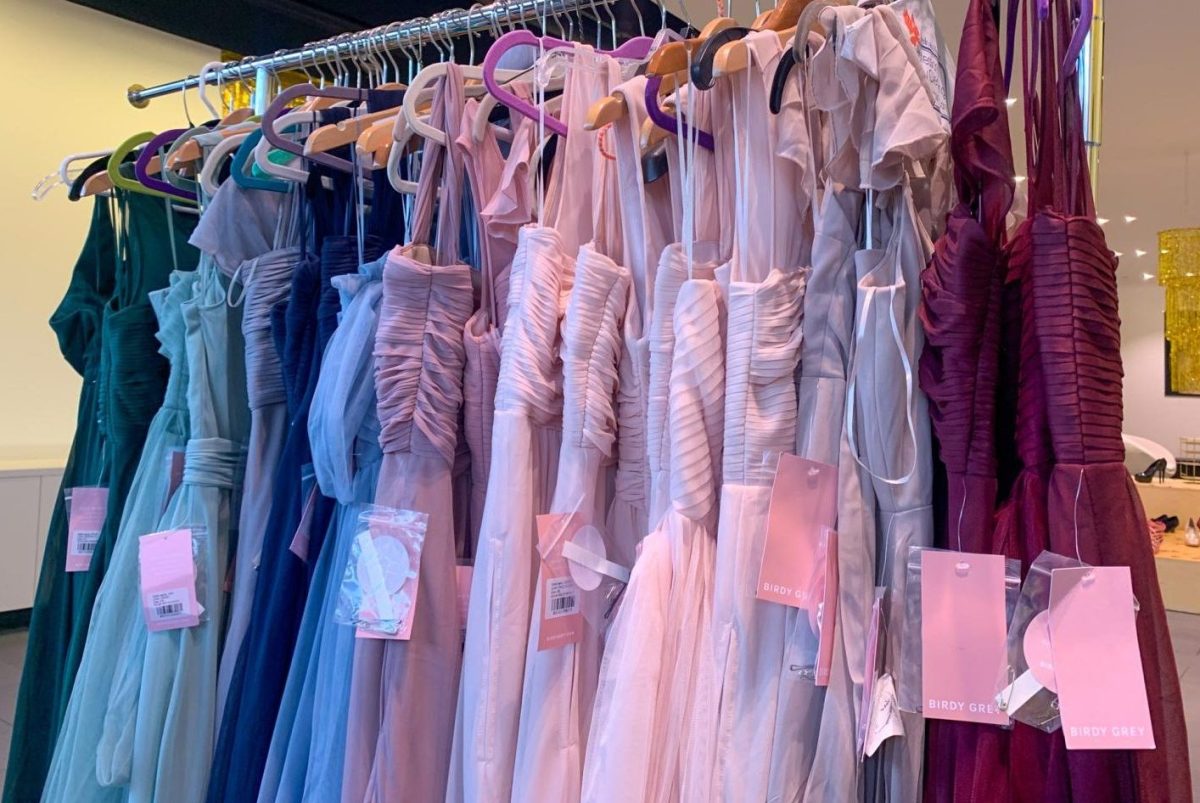The storefronts along San Francisco’s renowned Fisherman’s Wharf are constantly changing, as the popular space is highly contested. With a high turnover rate, many businesses come and go within months. The new Museum of Illusions, open since last February, is now part of the busy scene by the bay, and has become a social media destination where photos turn into experiences.
This self-guided museum leads the observer through a series of paintings along the walls that recreate both realistic and hypothetical scenes, featuring dreamscapes of San Francisco. Whether their pictures show them inside a holographic bubble or sitting on the edge of a broken cable car, visitors take turns posing in these unlikely scenarios, creating the sense of an “illusion”. I was thoroughly impressed with the artists’ skills by capturing the details and the effort shown in each painting, tricking the human eye.
The artists’ hard work has paid off with a line out the door of the museum; customer gains are most likely due to the desirable location. Personally, I enjoy going to this part of the city because there is so much to do. Additional advertising comes from previous customers sharing photos with friends and family about their positive experience.
Many customers stop to take photos at my personal favorite image, the painted Lombard Street background. This painting included a typical view from the top of the narrow, winding Lombard Street with a twist. Instead of pavement, the road was a lava river. The subject of the picture was meant to pose on a floating chunk of pavement, creating a chaotic but improbable scene from the artist’s imagination.

One drawback was the number of people in each room. I had to wait for visitors to take photos in front of paintings before I had a chance to look at each wall. The experience felt rushed as the crowd behind me was silently urging me on, so they could also have a turn with the illusions. Although the hoards of people shuffling from room to room may be good for the museum’s income, it negatively impacted my overall experience.
The short but rushed self-tour was engaging, and the atmosphere was lively. However, the price I paid for the tickets did not live up to my experience. The general admission tickets are $25 for general admission and $10 for a child. Unfortunately, to make the most of the Museum of Illusions one must go with a group in order to stage pictures in front of the paintings, and with expensive tickets, the price soon racks up.
My experience was enjoyable; however, I did not feel as though the museum lived up to my highest expectations. After hearing the name “Museum of Illusions,” I jumped at the idea of optical illusions that make your head spin, and didn’t expect the simple paintings on the wall meant for pictures. Other museums featuring illusions, like a different illusion museum in New York City, are full of a variety of misconceptions that mess with the viewers’ perception, such as lines and shapes that seem to move but are stand still. Even though it was unexpected, I enjoyed my time at the museum of illusions, and it gave me another reason to further explore this part of the city. The name misled me, but the photos I had by the end were very realistic looking, and to an oblivious friend, believably unbelievable.







